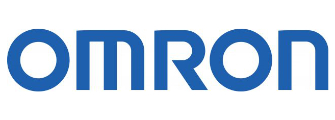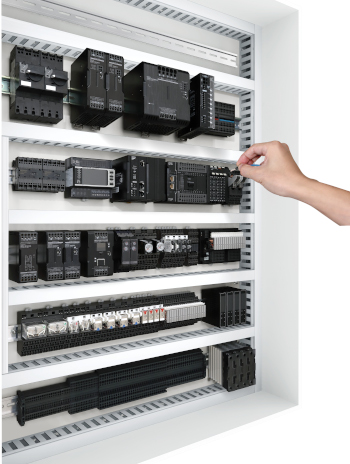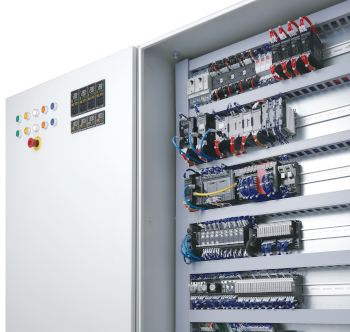
The power of predictive maintenance
By Mathieu Paré, Omron
Automation Machine Building
Sponsored by Omron
Predictive strategy cuts maintenance costs, reduces unplanned downtime and enhances worker safety.
 Today’s manufacturing companies face several pressing challenges that include maintaining or replacing aging equipment, minimizing unplanned downtime and overcoming the shortage of skilled workers.
Today’s manufacturing companies face several pressing challenges that include maintaining or replacing aging equipment, minimizing unplanned downtime and overcoming the shortage of skilled workers.
Predictive maintenance holds the key to surmounting many of these obstacles. This strategy helps manufacturers monitor equipment remotely, cut maintenance costs and avoid the sorts of adverse events that lead to unplanned downtime.
Remote monitoring and automated anomaly detection
Traditional preventive maintenance – as opposed to predictive maintenance – relies on experienced workers who regularly execute time-consuming manual tasks. Without in-house employees who can do this, manufacturers drive up costs and complexity by using third-party service providers. Many maintenance workers are now nearing retirement, leading to a scarcity of senior-level personnel who can train new hires.
Fortunately, some of the latest automation technologies can mitigate this issue. Predictive maintenance solutions are well-suited to keep machines running remotely and smoothly. In fact, the latest technologies are equipped with machine learning algorithms that store and reproduce human expertise. Artificial intelligence (AI) controllers, for example, build a model of “normal” machine behavior and sound an alarm whenever they detect an anomaly.
Cutting excessive maintenance costs
In the absence of a predictive maintenance strategy, companies must take care of their equipment with regularly scheduled preventive maintenance. According to Plant Engineering, manufacturers spend an average of 19 hours per week maintaining their equipment. These efforts can be very expensive as equipment ages and maintenance becomes increasingly time-consuming.
Manufacturers relying on preventive maintenance face a dilemma when mapping out a plan for replacing equipment. Without a continuous monitoring system to sound an alarm for issues that arise between maintenance sessions, the only way to avoid a catastrophic failure is to purchase new equipment before it’s truly necessary.
With predictive maintenance, manufacturers can rest assured that the system will indicate exactly when replacements are necessary. Continuous monitoring removes the costly demand to hedge one’s bets and builds confidence in a fully functioning system.
On top of saving money, predictive maintenance frees up employees’ time for correcting critical production issues and realizing modernization projects that will improve productivity and equipment performance (OEE) over the long term.
Prior to investing in a continuous monitoring solution, a company might be unable to invest in these projects due to lack of manpower. With a next-generation maintenance solution, it will also be less urgent for a company to look for new hires, and senior-level employees will have more time to coach the next generation.
Reducing unplanned downtime
Unplanned downtime is a serious issue that can cost millions of dollars in lost revenue, wasted products, and production line standstills. Most manufacturing companies have had their production lines go down without warning at least once in the past few years.
Manufacturers who use a reactive approach to unscheduled downtime rather than a proactive solution often don’t know when their equipment is due for repair or replacement.
While aging equipment is one of the main culprits, both legacy and new machines require regular maintenance to maximize their lifespan. To combat the high cost of preventive and reactive maintenance, many companies are now embracing predictive maintenance technologies that provide 24/7 condition monitoring to reveal any issues before an actual failure occurs.
In one example, a Canadian medical research facility found that its air handling units (AHUs) were failing unexpectedly despite frequently scheduled maintenance. When the facility started using a motor condition monitoring device for predictive maintenance, these failures stopped occurring.
The round-the-clock monitoring system helped the facility ensure 100% uptime of a critical system and avoid the destruction of valuable biomedical research materials that would otherwise result from a lack of AHU functioning.
Enhancing worker safety
We’ve already established that traditional preventive maintenance can be costly. However, an additional concern is the dangerous nature of the regularly scheduled maintenance tasks that this approach often involves. These activities are typically hands-on, bringing workers close to the hazardous portions of equipment.
 For example, workers who perform thermal inspections on energized electrical panels of 50 volts or greater may be exposed to arc flash risks and must wear protective equipment. Arc flashes can be thought of as an explosion of electricity in which tiny spark draws increasing amounts of power, causing a sudden flare-up of intense light and heat that can be fatal for anyone nearby. When a company takes advantage of a 24/7 thermal monitoring device, its maintenance workers no longer need to expose themselves to this type of risk on a regular basis.
For example, workers who perform thermal inspections on energized electrical panels of 50 volts or greater may be exposed to arc flash risks and must wear protective equipment. Arc flashes can be thought of as an explosion of electricity in which tiny spark draws increasing amounts of power, causing a sudden flare-up of intense light and heat that can be fatal for anyone nearby. When a company takes advantage of a 24/7 thermal monitoring device, its maintenance workers no longer need to expose themselves to this type of risk on a regular basis.
Making use of IIoT capabilities
Advances in sensors, analytics, and communication technologies are making predictive maintenance increasingly practical and affordable for all-size manufacturing companies. Turnkey solutions equipped with IIoT capabilities make it easy to garner real-time visibility of the health of equipment. This information can be further processed to help operators make informed decisions.
By monitoring power supply loads, motor condition, and equipment thermal condition in real time, IIoT-based predictive maintenance solutions are ideal for a wide range of industries and applications. Some key applications that can benefit from predictive maintenance includes:
- Paint stations, parts manufacturing, stamping presses, casting equipment, and control panels in the automotive industry
- Water and wastewater treatment, cooling water circulation, power generation, and exhaust ventilation units in the infrastructure industry
- Mixing stations, dryer stations, packaging stations, industrial chillers, and molding stations in the food and beverage industry
- Semiconductor deposition, molding stations, winding stations, dust collection, and parts transportation in the digital/electronics manufacturing industry
The ideal maintenance solution for any industry
To summarize, the benefits of traditional preventive maintenance only go so far. At some point, manufacturers are bound to start missing signs of equipment degradation or driving costs up by replacing perfectly functional equipment on a “just in case” basis.
A round-the-clock monitoring strategy is the only way to truly keep track of equipment and minimize downtime. Throughout the automotive, semiconductor, commodities, and other manufacturing industries, predictive maintenance solutions can streamline maintenance work while also supporting production.
www.omron.com
Omron Automation application specialist, Mathieu Paré, is a certified professional engineer based in Omron’s Quebec office. As a system integrator, he has held various roles of increasing responsibility from programmer, system architect, project manager and engineering manager. As a manufacturer, Mathieu was responsible for Industry 4.0 deployment in a plant containing 168 PLCs. With 20 years’ manufacturing and system integrator experience, Mathieu’s knowledge encompasses a wide range of fields from robotics and vision, to PLCs and SCADA up to industrial IT integration.
